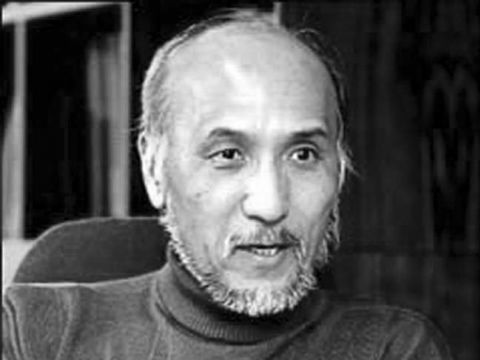In South Korea — where Chon led a research team that installed the first two nodes on Asia’s first internet protocol network — broadband connections are used in over 95 percent of households, a figure that eclipses every other country on earth. Singapore, Taiwan, and Hong Kong aren’t far behind, and all cast a shadow over the US, where broadband reaches about 60 percent of our homes.
Chon is also the founding father of multiple organizations that still drive the Asian internet — including the Asia Pacific Networking Group and Asia Pacific Top Level Domain Name Forum — and earlier this year, in recognition of his role in bringing the continent online, he was inducted into the inaugural class of the Internet Society’s (ISOC) Internet Hall of Fame, alongside such as names as Vint Cerf, Van Jacobson, Steve Crocker, Sir Tim Berners-Lee, and Elizabeth Feinler.

Though he pioneered the Asian internet at the Korea Institute of Electronics Technology, Chon isn’t Korean, and he spent his formative years outside the country. He was born and raised in Japan, and he completed his education in the U.S. After receiving a bachelor’s degree in engineering from Japan’s Osaka University in 1965, he enrolled in the fledging computer science program at the University of California at Berkeley, where many say the internet was born.
Chon tells us that at UCLA, he studied with Leonard Kleinrock, who oversaw the team that sent the first message across the ARPAnet, the US-Department-of-Defense-funded network that eventually morphed into the modern day internet. But Chon wasn’t involved with the ARPAnet during his nine years at the University. He says the time wasn’t right for a foreigner like him to work on a US military network. “It was the time of the Vietnam War,” he says.
But after he moved to Korea in the late 1970s and joined the new Korea Institute of Electronics Technology — a government-funded laboratory dedicated to computer and semiconductor research and development — he and his colleagues built their own network. In 1980, his team proposed a national network to the Korean Government’s Ministry of Commerce and Industry, and the idea was shot down. But a revised proposal was accepted a year later, and they soon began work on what was then called the Software Development Network, or SDN.
Crucially, the team chose to build the network using the TCP/IP protocol that researchers in the States — most notably Vint Cerf and Bob Kahn — had built for a revised incarnation of the ARPAnet. According to Chon, they settled on TCP/IP because their network was part of a larger computing research project that was based on the UNIX operating system and TCP/IP dovetailed nicely with UNIX. But the pick payed added dividends in the decade to come, when TCP/IP gave rise to the internet as we know it today.
In the early 80s, the United Kingdom and Norway also followed the ARPAnet’s move to TCP/IP, but Chon’s SDN was the first network to use the protocol outside of the U.S. and Europe. The network went live in 1982, before the ARPAnet was officially converted to the internet protocol. By 1985, it was connecting about twenty universities, national research laboratories, and corporate labs. And two years later, it was plugged into several other parts of Asia, including Australia, Indonesia, Japan, Singapore, Malaysia, and Hong Kong.
It was also plugged into the U.S., but not with TCP/IP. In those days, it talked to the States using a dial-up connection based on the Unix-to-Unix Copy, or UUCP, protocol. A TCP/IP connection didn’t arrive until the first leased line between the Korea and the U.S. was activated in 1990.
But Kilnam Chon didn’t seed the Asian internet. He was the driving force behind its evolution throughout the 80s and well beyond. In 1985, he was the program chair of the Pacific Computer Communications Symposium, the one of the first global internet conferences — and the last for several years. In 1991, he founded the Asia Pacific Networking Group, an organization whose sole purpose was to advance networking in the region. And in 1999, he launched the Asia Pacific Top Level Domain Consortium, which oversees the continent’s internet domain names.
No, he never worked on the ARPAnet. But he worked on something far bigger.